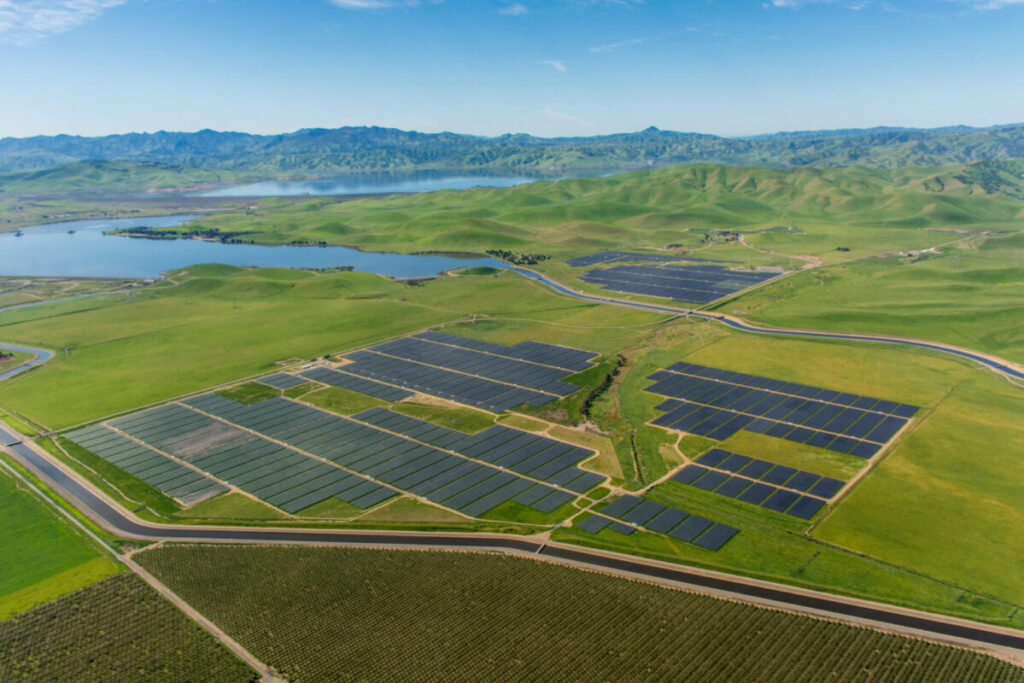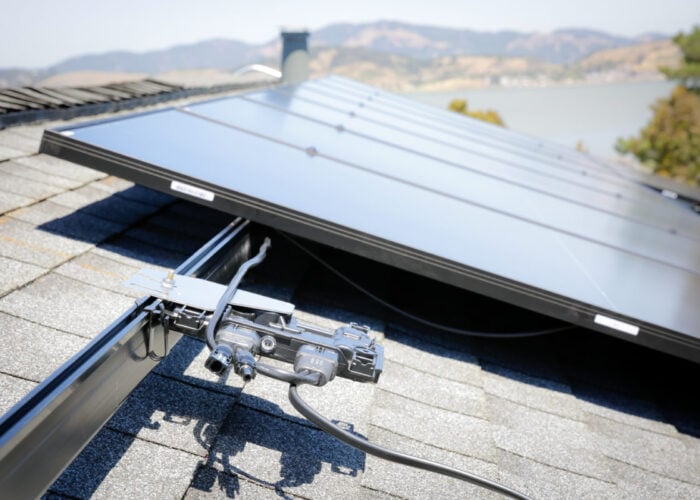
Liquidity is rising at a surprising pace in the US tax credit transferability market for clean energy, which is helping lenders to become increasingly comfortable with this novel marketplace, according to members of the legal and financial industries.
This was the opinion of Fred Petit, co-head of power and infrastructure in North America at Investec, who spoke at a webinar led by law firm McDermott Will & Emery on structuring and intercreditor dynamics in tax credit transfers. He noted that the environment for these new deals is becoming increasingly attractive as liquidity is opening “by the week,” specifically on the deals on which Investec is working.
Unlock unlimited access for 12 whole months of distinctive global analysis
Photovoltaics International is now included.
- Regular insight and analysis of the industry’s biggest developments
- In-depth interviews with the industry’s leading figures
- Unlimited digital access to the PV Tech Power journal catalogue
- Unlimited digital access to the Photovoltaics International journal catalogue
- Access to more than 1,000 technical papers
- Discounts on Solar Media’s portfolio of events, in-person and virtual
Or continue reading this article for free
Last year PV Tech Premium explained the various types of new deals thriving under the new system including innovative hybrid deals, with some huge deals in the energy storage and solar PV spaces, showing how the industry had to get to grips with significant changes brought about by the transferability market kicking off.
Alfred Johnson, CEO and co-founder of Crux, a New York-based sustainable finance company that offers an online marketplace platform enabling entities to transact and manage transferable tax credits, tells PV Tech Premium: “The market for clean energy tax credits developed much more quickly than anticipated.”
“The product is simpler and the base of buyers is significantly larger than existed for traditional tax equity. We estimate US$7-9 billion of 2023 credits transacted and expect the market to double in 2024. On Crux, we’ve seen more than US$4 billion of bids so far this year and pricing is healthy across credit categories.”
Signs of liquidity
Liquidity in the market increases relative to improvements in price transparency, discoverability and standardisation from one deal to another, which all helps to facilitate lots of deals quickly. Thus, one measure of liquidity is how fast a transaction can occur. Such a measure can be seen most clearly by comparing the tax credit transferability industry to the precedent structure, which was the tax equity partnership structure, to see if transactions are indeed faster.
While deal prices have predictable variations based on the size of the deal and whether they relate to the investment tax credit (ITC) or the production tax credit (PTC), deal prices have also now become more predictable within those specific individual categories. This was not the case in the tax equity market where there were fewer options to shop between partners, and “compare apples to apples” between different potential investment structures, according to Katie Bays, policy and research strategist at Crux.
Crux provides an example of accelerations in the speeds of deals. The company notes that more than 40% of the credits on Crux received bids within a week of being listed in 2023 and 2024. Moreover, 70% of those credits draw more than one bid, leading to better deals for the seller and facilitating price discovery through having commercial competition in one place.
“If you’ve got a popular credit, the market is liquid and dynamic enough that more than one buyer is probably going to see that credit and also bid on it,” says Bays.
Referring to the new transferability market overall, Bays says: “We at Crux are constantly surprised and amazed at how quickly this market has adapted to all of those different parts of the liquidity puzzle, including price transparency and price discovery. Buyers are comfortable, motivated, and willing to engage competitively. We’ve been consistently impressed by the rapid sophistication of the market.”
The impact of legislation
Solar PV in the US has historically taken advantage of the ITC and it remains the most economically advantageous structure for a solar project even since the passage of the Inflation Reduction Act (IRA), creating new tax credit options.
Before transferability took off six to nine months ago, the traditional tax equity players and the traditional lenders were employing a well-known, tried-and-true structure, explains Joel Hugenberger, a partner at McDermott.
“It was, frankly, maybe even a little bit boring, but post transferability taking off, the doors have really been blown open. Lenders have a wide array of possibilities before them, being anywhere from project-level debt to Mezzanine debt to portfolio financings,” says Hugenberger. “And yet, they’re still grappling with a new set of issues relating to tax credit transfers that weren’t present in the traditional tax equity market.”
Now, PV plants in the US Southwest, such as in Arizona and New Mexico, are now beginning to take advantage of the PTC. This is because the PTC is based on megawatt hours produced, with credits earned over time instead of upfront, and this provides better economics for larger scale solar plants that tend to have trackers, economies of scale and higher annual capacity factors.
Further changes are due at the end of this year where technology-neutral tax credits will replace the existing tax credits, making space for newer technologies such as battery energy storage to be paired with solar.
The two new tax credits, the 48E ITC and 45Y PTC allow for any power generation technology that has zero greenhouse gas emissions at the point of producing electricity. The Internal Revenue Service (IRS) has also now released guidance on the qualification process for these new credits.
Although a solar plant qualifying for the current tax credits would qualify for the incoming technology-neutral tax credits, the new process would require extra work in having to navigate new legal infrastructure, various unknowns as well as engaging with councils.
In any case, there is already a PV construction rush happening in the US with clean energy project finance lenders inundated with deals partly because tax credits periodically expiring tend to invoke a surge of activity in any case.
Aligning buyer and seller
In a recent whitepaper, ‘Risk mitigation and due diligence: Emerging standards for transferable tax credit transactions’, Crux noted that early alignment between buyer and seller in the due diligence process is crucial for ensuring successful and efficient transactions.
According to their survey, nearly 40% of advisors found that due diligence has been a cause of transaction delays. Over 70% of advisors indicated that buyer education is the most important driver of a smooth transaction, while 66% emphasized the importance of seller preparation for due diligence.
This desire for alignment could explain why, according to Petit, many lenders are still uncomfortable with the new process and prefer the typical methods seen in the tax equity market.
“Lenders are taking comfort from the fact that there is liquidity out,” Petit says. “It has opened up the universe of buyers for these tax credits quite substantially.”
Crux’s research has shown that while transaction risk mitigation remains a central focus for tax credit buyers and their advisors, most deals close smoothly and without much delay. Nearly 50% of advisors surveyed by Crux indicate they have closed substantially all the deals they’ve worked on. The report also concludes that due diligence standardization is streamlining transaction processes.
“Unlike a tax equity partnership, where the buyer is an active investor in the project for a period of years, a tax credit transfer conveys a more discrete set of risks,” the Crux authors wrote in their report.
According to the whitepaper, there is increasing cohesion and consensus among law firms, tax advisors, financial institutions and insurance brokers regarding risk mitigation, due diligence items, and deal terms in tax credit transactions.







